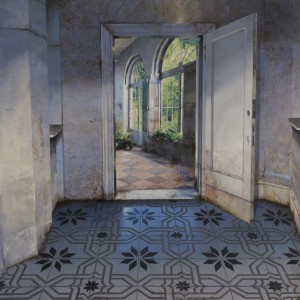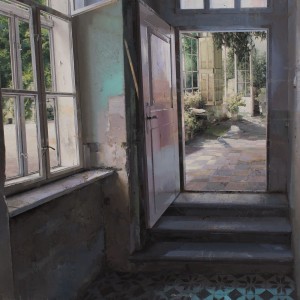As I See It with Bruce Helander – Painting is Alive and Well
Nov 25, 2015
Upon reports of his ‘passing’ Mark Twain famously announced, “The report of my death was an exaggeration.” This observation also might be utilized in reaction to perpetual news items and reviews that contemporary painting, suffering from a lack of quality and uniqueness, is on its way out. This honored craft is thought by many as basically dead in the water. Perhaps the main villain that has smeared the reputation of new narrative painting is the declaration that the time-honored discipline of mastering the basics of academic drawing and classical composition has been pushed aside to make way for alternative “innovation.” At the same time, the desperate search for overnight success pushed one young artist at Gagosian Gallery to cover an entire canvas with chewed up bubble gum. The pressure to attain commercial achievement demands that emerging artists try anything new, even though they may be seriously lacking in a foundation of skills that allows a real visionary artist to achieve an earned measure of success. Abstract painters like Picasso and de Kooning were natural talents at an early age, but both went through rigorous training. Warhol also showed early signs of significant talent and attended Carnegie Institute of Technology before leaving for Manhattan, where his acquired drawing skills made him the most sought after fashion illustrator in the city and was a natural springboard to his ultimate artistic ‘sainthood.’ It’s no accident that some of the most respected and thriving artists of our generation have come out of prestigious institutions like Yale Graduate School or the Rhode Island School of Design, where genuine talent and a strong academic background are prerequisites for admission and graduation. In the last twenty years it’s been alarming to see that many new artists on the scene, naturally talented or not, are producing work with a total lack of elementary expertise. This unfortunate circumstance might label them as a “flash in the pan,” since reality in the art market eventually sets in and thankfully takes its toll.
I recently was encouraged about my position on a proper visual education with the discovery of Italian artist Matteo Massagrande and his superb picture-making, and as my interest in his work got the best of me, I started to do some research on his obvious professional and academic background. To my delight but not my surprise, I learned that he was academically trained and influenced by the Renaissance masters. The artist will open a survey of his recent small-scale paintings at Shine Artists London in December, and from what I could gather these are exceptionally competent works that mix an unusual combination of skills to create magical fictional interior spaces that are not only believable, but possess a charismatic and undeniable handsomeness. In this series, Massagrande cleverly invites the viewer to become an unexpected voyeur, glancing down hallways that lead to more entrances and obscure spaces that are completely empty except for the distant memories and aging secrets they might hold. Literally seduced by the unexpected starkness of bare walls and floors, one is drawn inside, tempted by multiple perspectives that are accented with his remarkable use of light drifting through often open windows, exposing glimpses of lush gardens. His work is reassuring evidence that great narrative painting is alive and well.
These paintings are unusual for their obvious illusionistic invention and enjoyable common denominator of empty, convincingly three-dimensional spaces that take on the challenge of creating complexity from simplicity. Here the artist is a master at articulating illumination where none actually exists and creating authentic textural repeat patterns worn down over time; a formula that works brilliantly. Massagrande’s artwork reassures us that great painting is still here to stay, even though it may take an effort to seek it out.
For more information on Massagrande go to: http://www.shineartists.com/artists/matteo-massagrande
Author

Bruce Helander
Bruce Helander is a former White House Fellow of the National Endowment for the Arts and is the former Editor-in-Chief of The Art Economist magazine. His columns on art, values, and investing in art appear regularly in The Huffington Post.

:sharpen(level=0):output(format=jpeg)/wp-content/uploads/2016/02/As-I-See-It-with-Bruce-Helander-Painting-is-Alive-and-Well1.jpg)


:sharpen(level=1):output(format=jpeg)/wp-content/uploads/2024/05/The-Art-Lawyers-Diary-1.jpg)
:sharpen(level=1):output(format=jpeg)/wp-content/uploads/2024/04/5-Questions-with-Bianca-Cutait-part-2-1.jpg)
:sharpen(level=1):output(format=jpeg)/wp-content/uploads/2024/05/20231208_164023-scaled-e1714747141683.jpg)
:sharpen(level=1):output(format=jpeg)/wp-content/uploads/2024/04/header.jpg)
:sharpen(level=1):output(format=jpeg)/wp-content/uploads/2024/04/5-Questions-with-Bianca-Cutait-part-1-1.jpg)
:sharpen(level=1):output(format=jpeg)/wp-content/uploads/2024/03/5-Questions-with-Alaina-Simone-1.jpg)